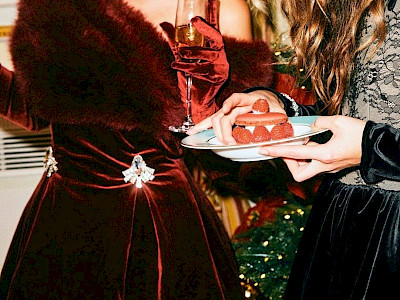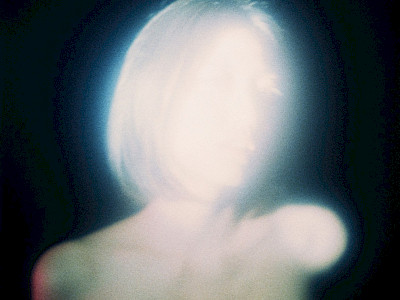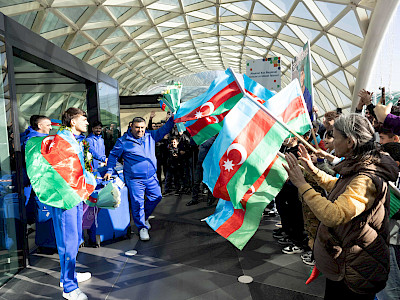
French embroidery art enjoys a well-deserved authority in the fashion world. Francois Lesage, the brightest representative of the famous House, existing since 1924, glorified it with its unique craftsmanship. The brainchild of maestro Lesage today is headed by Hubert Barrere, a conversation with which has become for us a kind of excursion into the wonderful world of embroidery and those who create it, the humble heroes of haute couture.
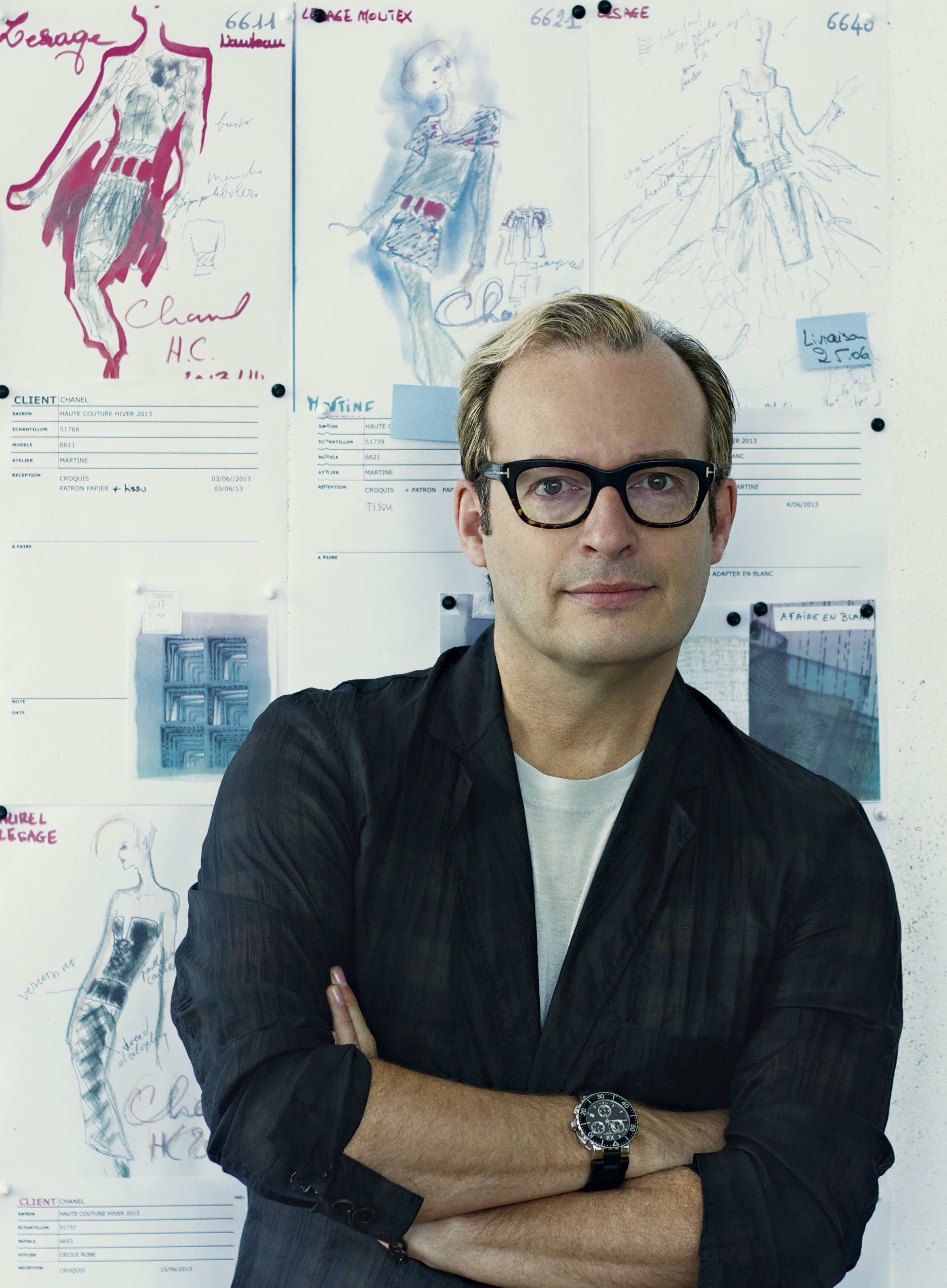
You have worked with the homes of Chanel, Louis Vuitton, Dior, Valentino, Gucci and with such talented designers like Jean-Paul Gaultier and Thierry Mugler. Which of these collaborations did you remember the most?
The first to impress me was Givenchy and Yves Saint Laurent, who had already become a legend. But the most striking was my collaboration with Alexander McQueen. The spontaneity and genius of this master shocked me.
You succeeded Francois Lesage, who held the post of art director of Lesage House for a very long time. What do you see your mission in?
Monsieur Lesage was a unique person, and it is impossible to replace him. And is it worth trying? I see my mission in continuing the traditions of this House. His legacy is worthy of high respect and is used in today's fashion. And fashion in its essence is a constant change.
How do you remember Francois Lesage?
This man possessed outstanding qualities – both human and professional, with a great sense of humour and extraordinary culture. He, like no one, knew how to communicate with people. And if today the art of embroidery is booming, then in many respects it is his merit. He fought the bans. Thanks to him, the inconspicuous haute couture professions began to be appreciated.
What are the peculiarities of cooperation with various buildings and their designers?
You need to know the style of each House well, respect and enrich it while trying to understand what the designer who represents this House wants. Moreover, the vision of the designer does not always fully coincide with the vision of the House. Our task is to propose something that would be consistent with both.
Lesage House is today the most famous embroidery enterprise. What is the basis of his success and longevity?
In many ways, the personality of Francois Lesage himself, his huge heritage. The house contains 60 thousand archives, some of which have been preserved since the 1860s. They are of great value to the history of fashion. Among others – the archives of Elsa Schiaparelli and Yves Saint Laurent. In addition, the people working here are fluent in their craft. Experienced craftsmen pass on their knowledge and skills to young people. What we are doing here is not just work, but real creativity in the service of fashion houses.
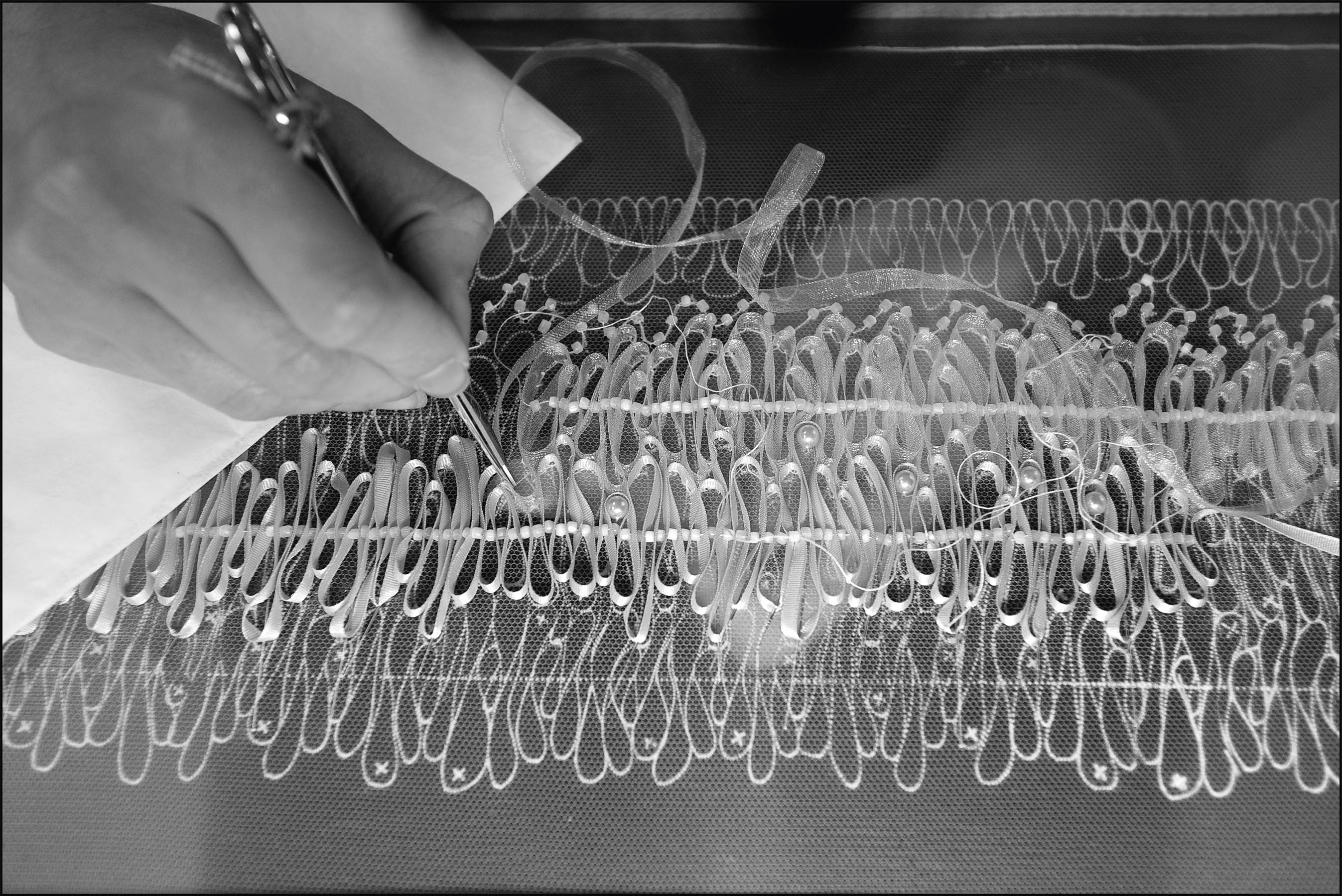
Lesage House was bought by Chanel House in 2002. Has anything changed in its functioning?
House Chanel before others became interested in supporting such professions. Lesage House is not the first one that Chanel House has taken under its wing. The purpose of this operation is to ensure the smooth operation of craft enterprises for both Chanel and other fashion houses that value impeccable quality.
In addition to haute couture models, you also expand the prêt-à-porter collections. Is there a difference in the work process?
The difference is not in quality, but rather in exclusivity. And on a budget, of course. The material for embroidery is very expensive, the process is time-consuming. The haute couture collections use rarer and more specific materials, and they spend more time than prêt-à-porter.
Can you comment on the phrase of Monsieur Lesage: “Couturier, as a composer. If there are no musicians nearby, there will be no music ”?
Comparison with music is very appropriate. I feel like a conductor, but if there is no orchestra, I will just wave my wand for nothing. But together we create a symphony.
Tell us about the professions involved in the production of haute couture embroidery.
There are about seventy workers in our House. They specialize either in drawing (designers) or directly in embroidery (embroiderers). Designers are divided into creative and technical specialists. There are many different techniques in embroidery. The main ones are manual and machine. We do not do computer or factory embroidery, as this is not our profile. In any technique that we use, whether manual or machine, manual work and human labour are always present. Hand embroidery, in turn, is divided into crochet and needle embroidery. Crochet embroidery is called “Luneville” (Luneville), it was created to speed up the embroidery process. Needle embroidery, with which it all began, is considered the noblest, remaining the most painstaking and slow needlework.
Why do you think French embroidery has such a high authority?
French embroidery includes almost all the embroidery techniques of the world. Her celebrity is determined by the political and economic situation. It all started back in the Middle Ages – with the so-called “white embroidery”, that is, embroidery with thread. In the XII century, with the advent of centralized power, the French state became stronger, and with the development of trade relations, Persian gold embroidery began to arrive in France in caravans. Marco Polo brought the world's finest Chinese embroidery based on silk thread. The art of French embroidery was also enriched by the Egyptian stitch and the technique of Italian craftsmen who arrived in France on the initiative of Francis I.
What are the main stages of work with the embroidery patterns of haute couture?
It all starts with the selection of a particular pattern. Either the designer already comes with a ready-made sketch of the model, or makes it depending on the drawing we offer. Then I meet with the heads of the workshops of our customers, together we consider the prototype of the model that needs to be embroidered, and think about how best to place the embroidery on it. Then the pattern is superimposed on the intended ornament, and an embroidery pattern is made, which is subsequently adjusted and approved in the studio. Next, we reproduce the pattern of embroidery on the fabric, and – embroider.
How much time is spent on embroidering an haute couture dress?
From 200 to 3000 hours, which makes it very difficult to execute “urgent” orders. And on average, it takes about 500 hours to embroider a dress.
Which fabric is the most difficult to embroider?
On a silk tulle, for example. It is too thin and cannot stand heavy embroidery. Or on velour, which because of the pile is simply a nightmare for the embroiderer!
Working with the most famous brands gives you the opportunity to observe and accompany today's trends. So what's new in fashion now?
The freedom that we are so screaming about has led to the fact that a clear aesthetic trend has disappeared from fashion, only general ideas and desires remain. The era of debate about long skirts is a thing of the past. Today, every fashion house presents a subjective vision of fashion. At the same time, designers breathe the same air and receive the same type of energy. For example, Raf Simons called his first collection in the Dior House – very floral – New Vintage. At the same time, Karl Lagerfeld decided to create a collection under the same name. But if for Simons this meant a reinterpretation of the traditions of the House of Dior, for Carl New Vintage meant “tomorrow's vintage”. So the same word expressed different ideas. Our role is to understand the concept of each of the designers and to direct creative and technical aspirations in the right direction.
What are your goals as the art director of Lesage House in the coming year?
We will continue to cooperate with fashion houses, look for new customers and get closer to young designers such as Gustavo Lins, Maxim Simmens, Alexander Votier, Iris Van Herpen... Our role is to serve fashion, and fashion is not only large houses. We create beauty. She comes to life only when you know how to recognize her. The goal of Lesage House is to convey to the next generation craftsmanship and an understanding of beauty.
Interview: Irina de Puff
Photo: Céline Barrere

